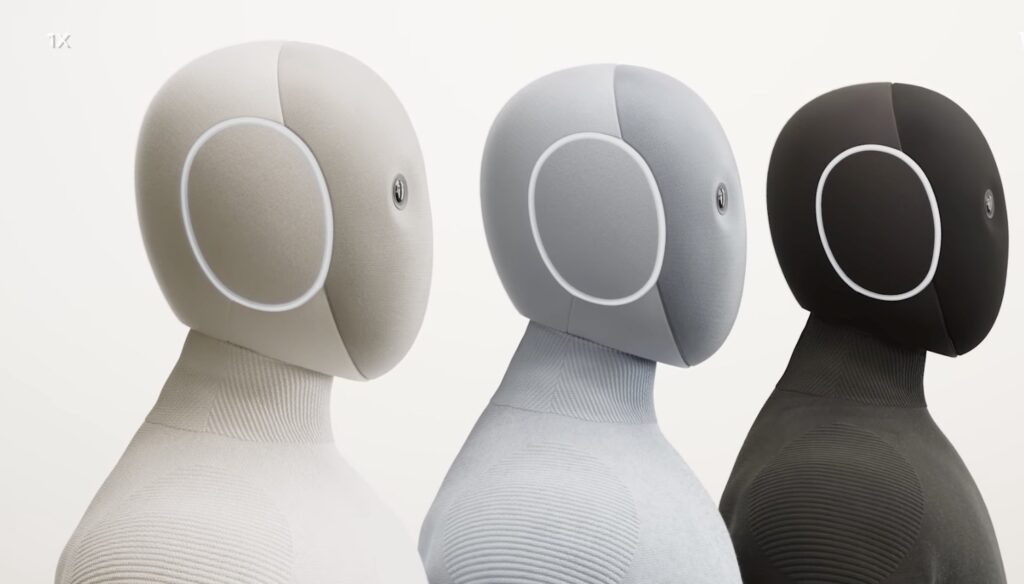Unveiling 1X’s Neo – A $20,000 Leap into Sci-Fi Living, Where AI Meets Human Oversight in Your Living Room
- Revolutionizing Home Life: 1X’s Neo promises to handle everyday chores like cleaning and assisting with tasks, bridging the gap between science fiction and reality, but it still relies on human operators for complex jobs.
- Ethical and Practical Challenges: While affordable and safe, the robot raises concerns about privacy, low-wage teleoperation, and the socioeconomic divide between users and remote workers.
- Future Potential and Skepticism: As a stepping stone to full autonomy, Neo collects data for AI training, but comments highlight risks like creepy indirection and the need for commercial applications first.
In the heart of Palo Alto, California, a quiet revolution is unfolding. On October 28, 2025, 1X Technologies proudly launched Neo, billed as the world’s first consumer-ready humanoid robot designed to transform everyday home life. For $20,000, you can pre-order this sleek, friendly machine with delivery slated for 2026. Neo isn’t just a gadget; it’s a vision of abundance, automating chores so you can reclaim time for what truly matters—family, hobbies, or simply relaxing. As 1X’s creators put it, “Humanoids were long a thing of sci-fi… then they were a thing of research, but today—with the launch of NEO—humanoid robots become a product. Something that you and me can reach out and touch.” Equipped with full AI software, Neo integrates seamlessly into your home, offering personalized assistance and even doubling as a mobile Bluetooth speaker. But beneath this glossy promise lies a fascinating blend of cutting-edge tech and old-school human intervention.
The Vision Behind Neo: Bridging Imagination and Reality
At its core, Neo represents 1X’s mission to build a “truly abundant society” through general-purpose robots. The company, based in Palo Alto, focuses on developing friendly home robots that live and learn alongside us. Neo’s hardware is revolutionary: it’s the safest, most affordable, and most capable humanoid on the market, capable of tasks like folding laundry, cleaning toilets (though it might need help with the finer details like wiping), or even distinguishing between spices like cayenne and paprika. WSJ’s Joanna Stern spent time with Neo and its creators, revealing what it can really do—and how much it still needs human help. For chores it doesn’t know, users can schedule a “1X Expert” to guide it remotely, helping Neo learn while getting the job done. This isn’t full autonomy yet; it’s a hybrid where AI meets human oversight, peering into your home via Neo’s camera eyes.

Human Operators: The Unsung Heroes of Robotic Assistance
This human element is where things get intriguing—and controversial. 1X is hiring Robot Operators for roles in Palo Alto, with shifts from 3-11pm Monday to Friday, paying $22–$31 per hour plus benefits like health insurance and 401(k) matching. No prior technical experience is required—just curiosity, attention to detail, and the ability to follow instructions. Operators will handle humanoid robots in R&D labs and eventually customer homes, collecting high-quality data, annotating sessions, monitoring performance, and ensuring safety. They’ll stage environments, assist in task execution, report issues with timestamps and videos, and even provide in-home support. Physical demands include standing for long periods, lifting up to 50 lbs, and potentially working in VR environments. Flexible shifts, including nights and weekends, are part of the gig, and reliable transportation is a must for commuting to offices or nearby customer sites.
But as comments from online discussions reveal, this setup sparks heated debate. One user suggested targeting commercial applications first, like hotels where a fleet of Neos could clean unoccupied floors efficiently—even if teleoperated remotely. “It would seem like the ideal target for this would be say a hotel operator,” they noted, highlighting benefits for remote locations with hiring challenges. Others see it as a gig economy twist: “This is the next gig job. Poor people working as servants for rich people halfway across the world,” reminiscent of the sci-fi film Sleep Dealer, where migrant workers remotely control robots across borders. Latency concerns were raised—Starlink might offer 100-200ms round-trip between China and the US, but adding equipment delays could make precise tasks like dishwashing tricky. “Add on top of that the latency of the operator’s equipment and the latency of the robot itself, and tasks like putting dishes in the dishwasher could get quite challenging,” one commenter pointed out.
Ethical red flags dominate the conversation. “Is having a real robot creepy? I don’t know. Is having a robot operated by a human creepy and scary? Absolutely yes,” argued tolmasky, warning that indirection—like anonymous online interactions or drone warfare—leads to worse behavior. Operators might face inhumane conditions, while wealthy users could treat the robot (and its hidden human) poorly, feeling detached from the “fake person on a video screen.” Socioeconomic dynamics amplify this: teleoperated robots allow “international low” wages, bypassing local market rates that maids might earn. “It’s even worse, with maids, given the socioeconomic dynamics, even if they are paid low, they will be paid ‘local-market-rates’ where by definition they will have to earn enough to (maybe barely) live nearby,” said joseangel_sc. Yet, some countered that it could provide opportunities: “Right, but the low income countries could also frame it as a new way to earn a living. I think avoiding giving jobs to those countries gives them no help.” Others drew parallels to robotic surgery, noting the precision required for household tasks and the years it takes to master such systems.

Privacy, Safety, and Societal Reflections
Privacy and safety are hot-button issues too. Inviting a remote operator into your home via Neo’s cameras raises alarms—”Besides having someone strange in your house, you also have the company probably recording stuff. Privacy wise… It’s worse,” noted RealityVoid. There’s fear of misuse: “Yep, we’re going to have robots molesting women and kids,” one hyperbolic comment warned, while another predicted scams targeting the elderly. Neo’s design, with its blank stare and plush aesthetic, even drew humorous critiques: “Looks like a Dr Who villain and a Bluetooth speaker had a baby,” or “It leans so far into the ‘infantile, plush, can’t hurt anyone’ aesthetic that it feels like a horror movie prop.” Skeptics question if Neo can deliver, comparing it to Elon Musk’s unfulfilled self-driving car promises: “What they show is so far ahead of what other robots can do right now… There is not a lot of probability that this robot will deliver on its promises.”
The Bigger Picture: Toward an Abundant Future?
From a broader perspective, Neo embodies the tantalizing yet fraught path to AI-driven abundance. It’s a data-collection machine disguised as a helper, feeding into AI training for eventual full autonomy—much like how robot vacuums map your home. But without continuous learning, current AI models struggle with novel tasks, as one commenter explained: “All of AI is flawed in this way. LLMs for instance have almost no continuous learning capability, that is why we don’t have AGI yet.” This hybrid approach might be a clever stopgap, but it exposes deeper societal rifts: labor exploitation, privacy erosion, and the unease of blending human and machine. As vineyardmike put it, “Laborers are literally training their replacement, and probably at questionable wages… Feels like a privacy and safety risk.” Yet, for seniors or busy families, Neo’s $20,000 price tag could be a bargain compared to full-time caregivers, handling everything from walking the dog to shattering (and cleaning up) your fine glassware.
Neo isn’t just a product; it’s a mirror to our ambitions and anxieties. Will it free us from drudgery, or entrench inequalities? As one user quipped, “So its servants then. Even needing a cleaner feels living unsustainably—its living in a house too big to maintain.” Early adopters like rdl, who preordered despite privacy concerns, plan to limit it to public areas. For now, Neo closes the gap between imagination and reality, but only with a human hand guiding it. As 1X scales, perhaps from Palo Alto to lower-cost areas, the true test will be whether it evolves beyond remote control into the autonomous companion we’ve dreamed of—or remains a high-tech puppet show.

